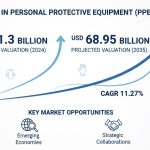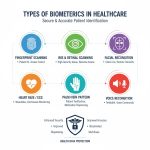Breast Imaging Market: Transforming Early Detection and Diagnosis in the Fight Against Breast Cancer
The global breast imaging market stands at the forefront of medical innovation, representing a critical component in the early detection and diagnosis of breast cancer worldwide. As healthcare systems continue to prioritize preventive care and early intervention strategies, breast imaging technologies have emerged as indispensable tools in saving lives and improving patient outcomes. The sophisticated evolution of imaging modalities, from traditional mammography to advanced digital breast tomosynthesis and magnetic resonance imaging, has revolutionized how medical professionals approach breast cancer screening and diagnosis.
Breast Imaging Market Insights
According to analysts at Vantage Market Research, The global Breast Imaging Market is valued at USD 5.68 Billion in 2024 and is projected to reach a value of USD 15.86 Billion by 2035 at a CAGR (Compound Annual Growth Rate) of 9.85% between 2025 and 2035. The increasing number of research grants, rising focus on contrast-based diagnostic solutions, and rising awareness in developing economies are expected to drive the market during the forecast period.
This remarkable growth trajectory reflects the mounting global recognition of breast cancer as a leading health concern and the corresponding investment in advanced diagnostic technologies. The market’s expansion is underpinned by a convergence of factors including technological breakthroughs, increased healthcare spending, and growing awareness campaigns that emphasize the importance of early detection in improving survival rates.
Get a Sample Copy:- https://www.vantagemarketresearch.com/breast-imaging-market-1390/request-sample
Market Growth & Projections:
- Global breast imaging market valued at USD 5.68 billion in 2024, projected to reach USD 15.86 billion by 2035.
- Expected compound annual growth rate (CAGR) of 9.85% between 2025-2035.
- Breast cancer cases projected to reach 2.1 million globally by 2030 according to WCRF.
Report Overview
Factors such as the rising prevalence of breast cancer, technological breakthroughs in the domain of breast imaging, and investment from several organizations in breast cancer screening programs drive the market. According to the World Cancer Research Fund (WCRF) by 2030, the number of cases of breast cancer is likely to reach about 2.1 million globally. Also, as per the World Health Organization report on breast cancer released in March 2021, over 2.3 million women globally were diagnosed with the disease in 2020, with approximately 685,000 dying as a result of its severity. Breast imaging is the primary method of diagnosis for a vast majority of breast cancer patients globally. This aspect is expected to contribute to the growth of the market during the forecast period.
The alarming statistics surrounding breast cancer incidence have catalyzed unprecedented global action across healthcare sectors. Medical institutions, government agencies, and non-profit organizations have recognized that early detection through advanced imaging technologies represents the most effective strategy for reducing mortality rates and improving long-term survival outcomes. This realization has translated into substantial investments in state-of-the-art imaging equipment and comprehensive screening programs designed to reach diverse populations across various socioeconomic backgrounds.
In recent years, the rising frequency of breast cancer and its associated mortality at a young age, as well as its delayed presentation, has prompted women to seek medical attention as immediately. Many breast cancer cases in developing countries are discovered at a late stage due to a lack of information about early warning symptoms and screening methods. As a result, numerous organizations all around the world are implementing breast cancer awareness initiatives and campaigns.
Government-sponsored initiatives have become instrumental in expanding access to breast imaging services. Breast Screen Australia, the government’s nationwide screening program in Australia, mandates free mammograms for women aged 50 to 74 every two years. Breast imaging for early diagnosis in the early stages of breast cancer was discussed in Cancer Australia’s “Guidance for the management of early breast cancer – Recommendations and practice points,” which was published in September 2020. Similarly, in April 2022, the Dutch National Institute for Public Health and the Environment (RIVM), which coordinates a breast cancer screening program for women between 50 and 75 years old, reported that participation in the program in the previous year was only 70.4% because of apprehension over SARS-CoV-2 virus infection.
The commitment to breast cancer prevention extends beyond government initiatives to include substantial private sector involvement. Every year, the National Breast Cancer Foundation, Inc. (a non-profit organization) organizes the National Mammography Program in the United States, which provides free mammograms and diagnostic services for the early detection and treatment of breast cancer. In August 2019, the Canadian Cancer Society announced a partnership with Stand Up to Cancer Canada (SU2C Canada) and the Canadian Institutes of Health Research (CIHR) to develop the SU2C Canada Metastatic Breast Cancer Dream Team. This team received $6 million in funding to perform nationwide clinical trials and public awareness campaigns to prevent and cure metastatic breast cancer.
These screening programs have been shown to save lives compared to unscreened populations. Thus, rising screening programs and government initiatives are anticipated to upsurge the awareness associated with the diagnosis and treatment of breast cancer and thus might eventually aid the breast imaging market growth. Widespread research in the development of hybrid imaging systems provides high growth opportunities and also aids market growth. Recent developments in imaging technology have completely revolutionized the nature of treatment and the way it is approached. To view the metabolic data and anatomical characteristics of the organs, it has become more crucial to combine imaging methods like CT scans, MRIs, PET, and others. Furthermore, the quality of breast pictures, patient comfort, and patient dose have all been enhanced by these integrated imaging modalities.
The technological advancement in breast imaging has reached unprecedented levels of sophistication. Manufacturers across the globe are concentrating more on the introduction of new products to improve the sensitivity and precision of breast cancer diagnostics. For Instance, in January 2021, Seno Medical Instruments obtained premarket approval from The Center for Devices and Radiological Health in the U.S. for its diagnostic breast cancer imaging technology. The novel technology specialized in differentiating malignant and benign breast lesions. Such innovations represent a paradigm shift toward more accurate, less invasive diagnostic procedures that can significantly reduce false positives and unnecessary anxiety for patients.
The adoption of highly sophisticated imaging methods and systems for breasts as well as advances in the detection of breast cancer are predicted to accelerate market expansion. Hence owing to the aforementioned factors, the market is anticipated to propel at high growth rates. However, the high cost of imaging systems and the adverse effects of radiation exposure are expected to hinder the growth of the studied market in the forecast period.
External factors have also influenced market dynamics significantly. The Russia-Ukraine war has severely impacted the health system due to damage to health infrastructures such as hospitals and clinics. Due to storage space issues and the expense of maintaining a big inventory, the majority of hospitals rarely have supplies of medications and consumables that last longer than a few days. Particularly commodities required for treating war injuries, such as antibiotics, blood supplies, and wound dressings, are exhausted from these stocks. It will be extremely challenging to provide in Ukraine, and it will be challenging to determine the entire degree of the interruption to the health system, especially since cyberattacks have affected IT systems.
This disruption has highlighted the vulnerability of healthcare infrastructure during times of crisis and emphasized the need for resilient medical supply chains and robust healthcare systems. Primary care, screening, and immunization programs have been disrupted, implying that those with chronic illnesses like diabetes or heart failure might not receive the best care possible. The post-war era is frequently marked by instability, political unpredictability, infrastructure damage and degradation, inadequate healthcare resources and staffing, unemployment, and a wide range of product shortages.
International humanitarian response has demonstrated the global healthcare community’s commitment to maintaining essential services even during unprecedented challenges. Various organizations and market players are meeting the health needs of children and adults in Ukraine and in surrounding countries affected by Russia’s invasion of Ukraine. For instance, as per stated by the WHO in June 2022, in order to support Ukraine’s increasing humanitarian needs, administer acute medical care, and boost the health system’s long-term resilience, the WHO has made an updated appeal for USD 147.5 Million. Of this sum, USD 80 Million is required for in-country assistance, such as the provision of essential healthcare services and the distribution of medications, and an additional USD 67.5 million is needed to support countries that are hosting and accepting refugees, such as Poland, the Czech Republic, Moldova, and Romania.
Key Market Players:
- Major companies include Hologic, GE Healthcare, Siemens Healthineers, Philips, and Fujifilm.
- Intense competition driving technological improvements and cost reductions.
- Mid-size companies increasing market presence through innovative product launches.
Key Companies & Market Share Insights
The breast imaging market is competitive and consists of several major players. In terms of market share, few major players currently dominate the market. However, with technological advancements and product modernizations, mid-size to smaller firms are increasing their market presence by launching new products and reducing the side effects of the procedures. The players in the market are striving to maintain their potential market share. Growing competition by means of technological improvements and new product developments leading to a reduction in the cost of the product is projected to boost the market.
The competitive landscape reflects a dynamic ecosystem where established medical technology giants compete alongside innovative startups and emerging companies. Some of the prominent players in the breast imaging market are: Hologic, Inc. (US), GE Healthcare (US), Siemens Healthineers (Germany), Koninklijke Philips N.V. (Netherlands), Fujifilm Holdings Corporation (Japan), Canon Inc. (Japan), Aurora Healthcare US Corp. (US), Allengers (India), Dilon Technologies, Inc. (US), Planmed Oy (Finland), Delphinus Medical Technologies, Inc. (US), Micrima Limited (UK), CMR Naviscan Corporation (US), SuperSonic Imagine (France), and Carestream Health (US).
The market’s competitive intensity has fostered an environment of continuous innovation, with companies investing heavily in research and development to differentiate their offerings. This competition has resulted in significant benefits for healthcare providers and patients, including improved image quality, reduced examination times, enhanced patient comfort, and more accurate diagnostic capabilities.
Primary Market Drivers:
- Rising incidence of breast cancer worldwide with 2.3 million women diagnosed in 2020.
- Increasing government and organizational investment in breast cancer screening programs.
- Technological advancements in imaging modalities and AI integration.
- Growing awareness campaigns and early detection initiatives globally.
- High equipment costs limiting adoption in small-scale facilities and developing regions.
- Radiation exposure concerns and potential diagnostic errors in dense breast tissue.
- Maintenance costs and need for skilled professionals creating entry barriers.
- Expanding markets in India, China, Brazil, South Korea, and other developing economies.
- Government initiatives like India’s Ayushman Bharat insurance program enhancing accessibility.
- Portable and automated imaging systems gaining FDA approvals for broader deployment.
- COVID-19 pandemic affecting screening program participation rates.
- Russia-Ukraine conflict disrupting healthcare infrastructure and supply chains.
- International humanitarian efforts highlighting need for resilient healthcare systems.
Global Breast Imaging Market Dynamics
The breast imaging market operates within a complex framework of drivers, restraints, opportunities, and challenges that collectively shape its trajectory. Understanding these dynamics provides crucial insights into the market’s future direction and potential areas for growth and improvement.
The rising incidence of breast cancer serves as the primary driver for market expansion. The incidence of breast cancer is consistently increasing in developed as well as developing countries. This rising incident has increased a demand for technologically advanced instruments that focuses on early detection. The increasing number of breast cancer cases has forced governments across the globe to raise awareness regarding the importance of the early detection of breast cancer. According to the American Cancer Society, breast cancer is the second-leading cause of cancer-related deaths in women across the globe. Approximately 2,261,419 new cases of breast cancer were diagnosed in women, and 684,996 women died due to breast cancer across the world in the year 2020. Due to consistent rise in breast cancer cases each year, the demand for advanced breast imaging equipment is expected to grow in the coming years.
Despite the positive growth drivers, significant restraints continue to challenge market expansion. High equipment costs represent a substantial barrier to widespread adoption. Recent technological advancements and newly added features have increased the cost of beast imaging equipment. There is a consistent rise in the cost of these systems with the introduction of automation with the help of AI. The new state-of-the-art equipment reduces reading time and provides users with accurate results but is often costly. In addition, there are recurrent expenses in the form of maintenance costs, which ultimately drive up the overall cost of ownership. Small-scale users such as diagnostic centers and breast care centers find it difficult to afford such equipment due to restricted budgets. This high cost has left users reliant on government and private research funding, which restricts market growth to a certain extent.
However, significant opportunities exist in emerging markets. Developing economies offers high growth opportunities for key players operating in the breast imaging market. Countries such as India, China, Brazil, South Korea, Turkey, Russia, and South Africa has large population base and offers a sustainable market for diagnostic imaging devices. The demand for diagnostic imaging has significantly increased in emerging economies due to the rising prevalence and growing awareness of breast cancer. The Indian government is focusing on providing the insurance scheme under the Ayushman Bharat program. The growth in the emerging economies is accompanied by favorable government and private policies to enhance access to diagnostic imaging, including the provision of reimbursement.
Technical challenges persist in the form of diagnostic accuracy concerns. Lower sensitivity, low reliability, painful compressions, and low patient tolerance are some of the potential limitations of various breast imaging modalities. some invasive breast tumors detected by traditional mammography stop growing at certain stages. These tumors are considered non-life-threatening, and their detection through mammography leads to unnecessary need for overtreatment. X-ray mammography is a superior technology to avoid all these limitations and to obtain accurate results. However, in some countries like US the further testings are required to confirm the results. Hence, the accuracy of mammography in women with dense breasts becomes lower, leading to diagnosis errors. The limitations of the above mentioned imaging modalities are expected to hamper the adoption of these technologies.
Technology Leadership:
- Ionizing technology segment dominates with 63.2% market share in 2022.
- Mammography remains the gold standard for breast cancer screening.
- AI-powered imaging systems gaining traction for improved accuracy and reduced healthcare worker burden.
- Hybrid imaging systems combining CT, MRI, and PET technologies showing high growth potential.
Technology Insights
The technological landscape of breast imaging continues to evolve rapidly, with ionizing technology maintaining its position as the dominant segment. The Ionizing technology segment held the largest market share of around 63.2% in 2022 and is anticipated to witness the fastest growth over the forecast period. The segment will expand in the upcoming years as a result of the introduction of new ionizing technology-based breast imaging technologies. Additionally, advancements in currently available ionization-based technologies are likely to receive significant funding, contributing to the market’s expansion over the forecast period. Moreover, the majority of market participants’ ongoing commitment to raising the number of technology expenditures made in order to offer superior products in the market.
Mammography continues to represent the gold standard in breast cancer screening, benefiting from continuous technological refinements and validation studies. Due to numerous efforts made for breast cancer early detection, the mammography segment of the global breast imaging market is expanding. The United States Preventive Services Task Force, for instance, has created standards for mammography screening. A cross-sectional study on the most accurate techniques for breast cancer diagnosis was conducted and published in the journal Clinics in July 2020 under the title “Evaluation of the accuracy of mammography, ultrasound, and magnetic resonance imaging in suspect breast lesions.” According to the study, mammography provided a more accurate assessment of worrisome breast masses. The procedure is the most preferred way to diagnose breast cancer because of its accuracy. These benefits contribute to the mammography segment of the breast imaging market growth.
Artificial intelligence integration represents one of the most significant technological advancements in recent years. Several significant market companies are also concentrating on mammography for breast cancer diagnosis. For example, in August 2021, Fujifilm Medical Systems unveiled the ASPIRE Cristalle mammography system, which will use ScreenPoint Medical’s Transpara powered by Fusion AI for 2D and 3D mammography. The use of artificial intelligence in breast cancer screening might assist to lessen the workload of healthcare personnel. Such advancements in mammography for breast imaging are expected to contribute to the growth of the breast imaging market over the forecast period. Furthermore, various advances in the area have reduced over-diagnosis and improved sensitivity to identify tiny carcinomas. These constant improvements in this sector are anticipated to boost segment growth.
End-Use Patterns:
- Hospitals dominate the market with 42.2% revenue share in 2022.
- Diagnostic imaging centers segment experiencing significant growth due to increased breast cancer awareness.
- Hospital-diagnostic center partnerships emerging to reduce costs and expand service reach.
End-use Insights
The end-use segment analysis reveals distinct patterns in adoption and utilization across different healthcare settings. Hospitals dominated the end-use segment in 2022 with a share of around 42.2% in terms of revenue. The presence of advanced and well-equipped breast imaging facilities within a hospital positively affects various factors, such as duration of hospital stay, total healthcare cost, quality of care, and availability of emergency care. For instance, in September 2019, Parkside Hospital in Wimbledon installed a 3Dmammography system from Hologic that enables high-resolution breast tomosynthesis. As investments in healthcare structures have increased over the world, this trend will aid in market expansion in the next years.
The hospital segment’s dominance reflects the comprehensive nature of breast cancer care, which often requires integration with other medical specialties and immediate access to treatment options. Investing has enabled the procurement of improved infrastructure and diagnostic equipment. It has also been effective in providing good health coverage in all hospital-based healthcare services. These are the key factors that will contribute to hospital segment growth in the next years.
However, the landscape is becoming increasingly diversified as specialized diagnostic centers gain prominence. Large-scale hospitals usually have in-house breast imaging facilities; however, the requirement of high investments & frequent maintenance, space, and skilled professionals can act as an entry barrier. This can burden hospitals trying to manage their medical imaging facilities. To reduce this burden and to increase the reach of their facilities and services, hospitals can partner up with diagnostic imaging centers for providing medical imaging facilities.
The diagnostic imaging centers segment is expected to witness significant growth during the forecast period, owing to an increase in awareness about breast cancer. This has accelerated the demand for breast imaging procedures used for diagnosis, treatment planning, and prevention of breast cancer. The availability of advanced breast imaging services in diagnostic centers of developed & developing economies, such as the U.S., Germany, the U.K., Japan, China, and India, is expected to propel the overall segment growth.
Regional Market Dynamics:
- North America leads with 37.8% market share in 2022, driven by comprehensive screening guidelines.
- Asia-Pacific expected to experience fastest growth due to large population base and expanding healthcare infrastructure.
- Emerging economies offer significant opportunities with favorable government policies and insurance schemes.
Regional Insights
Geographic analysis reveals significant variations in market adoption and growth patterns across different regions. North America dominated the breast imaging market in 2022 with a share of around 37.8% in terms of revenue and is expected to exhibit a considerable growth rate during the forecast period. The rising number of breast cancer cases in this region is adding to the growth of the Breast Imaging market. As per the American Society of Clinical Oncology in its 2022 article on Breast Cancer Statistics, a projected 287,850 women in the U.S. will be diagnosed with invasive breast cancer, and 51,400 women will be diagnosed with non-invasive (in situ) breast cancer in 2022. The large prevalence of breast cancer in the U.S. is thus likely to drive the growth of the breast imaging market in the region.
The North American market’s leadership position is reinforced by comprehensive screening guidelines and robust healthcare infrastructure. In September 2020, the United States Center for Diseases Prevention and Control released guidelines signified by numerous cancer research institutes on breast cancer screening for different age groups. Most cancer institutes, including the American Cancer Society, American College of Obstetricians and Gynecologists, and American College of Radiology, indicate that women in the age group of 40 to 49 years old should take up a breast cancer screening once a year. Such guidelines focusing on the welfare of the people in the region add to the rise in the number of diagnostic screenings performed in the area, which will positively impact the growth of the breast imaging market in the forecast period.
Innovation continues to drive market growth in North America, with regulatory approval processes facilitating the introduction of cutting-edge technologies. Key players in the sector are increasing their research & development efforts to produce new technologies for breast imaging, which is fostering the market’s expansion. For instance, the ATUSA from iSono Health, a portable system that automatically scans the entire breast and provides a three-dimensional image of the breast tissue, was approved by the US Food and Drug Administration in May 2022. The rise in the adoption of such cutting-edge technologies in the region is contributing to the expansion of the market during the projected period.
Meanwhile, the Asia-Pacific region presents the most compelling growth opportunity for market expansion. Asia-Pacific will experience the fastest rate of growth in the global market. The increased prevalence of breast cancer, high R&D investments in breast cancer therapies, and developments in breast imaging modalities are the primary drivers driving the growth of the market. Breast cancer is the most frequent malignancy in most Asian countries regardless of race or ethnicity, according to the Centers for Disease Control and Prevention (CDC). According to GLOBOCAN 2018, the age-standardized incidence rate of breast cancer in Asia is 34.4 per 100,000 people.
The Asia-Pacific region’s growth potential is amplified by improving healthcare infrastructure and increasing healthcare accessibility. The increased prevalence of breast cancer and the region’s expanding healthcare infrastructure are likely to fuel overall growth. The presence of developing countries, such as China, Japan, and India, is anticipated to boost the market growth in the Asia-Pacific region. In addition, key players are making constant efforts to enter emerging markets of Asia Pacific, which is expected to boost the breast imaging market over the forecast period.
The breast imaging market represents a critical intersection of medical necessity, technological innovation, and healthcare accessibility. As the global burden of breast cancer continues to grow, the demand for advanced, accurate, and accessible imaging solutions will only intensify. The market’s trajectory toward USD 15.86 billion by 2035 reflects not just commercial opportunity, but a collective commitment to improving outcomes for millions of women worldwide through early detection and precise diagnosis. The continued evolution of imaging technologies, coupled with expanding access in emerging markets and ongoing refinements in screening protocols, positions the breast imaging market as a vital component of global healthcare infrastructure dedicated to fighting one of the world’s most prevalent and challenging diseases.
Frequently Asked Questions (FAQs)
- What is the current market size of the global breast imaging market and what is its projected growth?
- What are the primary factors driving the growth of the breast imaging market through 2035?
- Which technology segment dominates the breast imaging market and why?
- What are the main challenges hindering the adoption of breast imaging technologies globally?
- Which region currently leads the breast imaging market and which region is expected to show the fastest growth?
- How is artificial intelligence (AI) being integrated into breast imaging technologies and what are its benefits?
- What role do government screening programs play in driving breast imaging market growth?
- Which end-use segment holds the largest market share – hospitals or diagnostic imaging centers?
- Who are the key players in the breast imaging market and how competitive is the landscape?
- What growth opportunities exist in emerging economies for breast imaging market expansion?
- How do the high costs of breast imaging equipment impact market growth, particularly in developing regions?
- What are the main limitations of current breast imaging modalities like mammography?
- How has the COVID-19 pandemic and geopolitical conflicts like the Russia-Ukraine war affected the breast imaging market?
- What technological advancements are expected to shape the future of breast imaging?
- How do screening guidelines and recommendations from major health organizations influence market demand?
![[Market Research Reports] – Research Google News Blog | VMR.Biz](https://www.vmr.biz/wp-content/uploads/2022/12/logo-removebg-preview.png)











